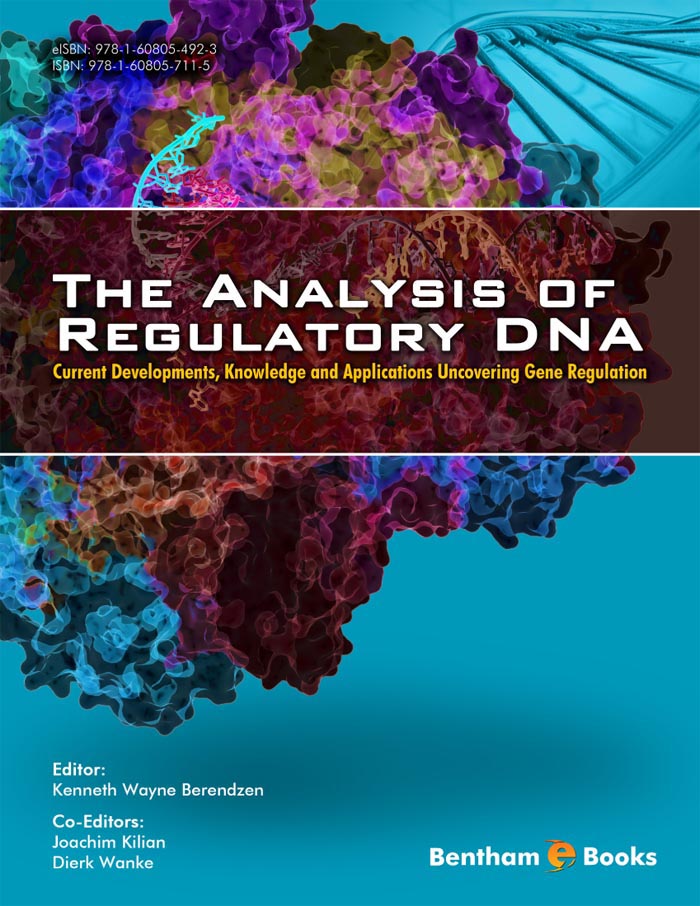Transcription is the complex, multistep process which transfers the genetic information stored in DNA to RNA. The synthesized and processed RNAs encode for proteins as the building blocks of all living cells such as the mRNAs, are structural compounds of many RNA-protein complexes such as ribosomes, are required for protein translation such as the tRNAs and rRNAs or function as regulator of RNA stability and activity such as the microRNAs. Thus, the regulation of eukaryotic transcription and gene expression is expected to be a highly sophisticated process, which is controlled and fine-tuned at multiple molecular and cellular levels.
The eBook begins with a chapter by Kenneth W. Berendzen, who summarizes the vast field of how transcript abundance in eukaryotes is controlled emphasizing on the complexity of this process. This introduction provides a firm basis for the following up chapters. In the chapter “The consensus RNA polymerase II core promoter and beyond”, Szakonyi and Berendzen focus on core elements of Pol II-dependent promoters, present different eukaryotic promoter classes and discuss a plant-specific core promoter which acts, as likely case of intron-mediated enhancement, downstream of the transcription start site.
Epigenetic processes play a major role in the regulation of eukaryotic transcription. In the chapter “Epigenetics and chromatin structure”, Audrey Vincent and Isabelle Van Seuningen describe excitingly the two major mechanisms of epigenetic regulation: DNA methylation and covalent modification of nucleosomal histone proteins, and how these processes are interlinked. microRNAs (miRNAs) have been shown to regulate the number of protein molecules produced by mRNAs. In the chapter “microRNAs: macro regulators in biological networks”, Jianzhen Xu and Shijun Xu shortly describe the different modes of miRNA action and provide a detailed overview on miRNA characteristics for metazoans and plants, focus on unexpected chromatin effects on nuclear miRNAs and present computational tools for analyzing the miRNA’s role in gene networking.
Phylogenetic footprinting is an evolutionary tool which can be used for the identification of functional elements in genomes. Hozanna A. Castillo and colleagues demonstrate in the chapter “Phylogenetic footprinting: an evolutionary tool for the identification of cis -regulatory elements”, how this approach is of great value for the functional characterization of promoters and distal acting enhancers and silencers in vertebrate genomes. In the chapter “Limits and Prospects of Methods for the analysis of DNA-Protein interaction”, Luise H. Brand and colleagues describe and explain state-of-the-art methods for determining cis -element binding sites in vitro and in vivo and their application to high-throughput and genome scale methods.
Synthetic promoters become more and more important to gain control of spatial and temporal gene expression. Nicolas Jonckheere and Isabelle Van Seuningen in their chapter “Reporter, inducible and synthetic promoters: Engineering tools to study gene regulation and biological system”, describe how such promoters are applied to studying eukaryotic transcription in the context of gene transfer and gene therapy, and give an outlook, how engineered promoters will provide the basis for diverse applications in manipulations, tissue engineering and biopharmaceutics. Finding cis -regulatory elements in eukaryotic genes is still a challenge. In the chapter “Identifying cis elements in eukaryotes using old tricks and high throughput sequence data”, Björn Usadel and colleagues firstly describe the general structure of a core promoter and then discuss the approaches how to find functional cis-regulatory elements. They also show how next generation sequencing will help to make cis element identification more reliable.
Cooperative binding of several transcription regulators to one and the same gene promoter is the Dirk Walther’s topic in the chapter “The combinatorics of cis -regulatory elements: from cooperatively acting motifs to gene regulatory networks”. He highlights bioinformatics approaches used to capture the complexity of cooperatively at composite cis-regulatory elements and gives an overview on available Web-based resources that utilize information on transcription factor – target gene binding events for gene regulatory network analysis. In the last chapter “Structural insights into physical interactions of transcription factor-DNA complexes at an atomic level”, Nina Fischer and Oliver Kohlbacher describe and discuss the most promising computational approaches to model protein-DNA interaction interfaces at an atomic level. In an interesting case study, they present a computational modeling technique for the ab initio three-dimensional design of transcription factor-DNA complexes.
I sincerely thank the contributors who made this eBook possible and rewarding. I am sure this eBook will provide the basis for knowledge update, lively discussions and a starting point for further research on eukaryotic transcription.
Prof. Dr. Klaus Harter
Center for Plant Molecular Biology (ZMBP)
University of Tübingen
Tübingen
Germany

